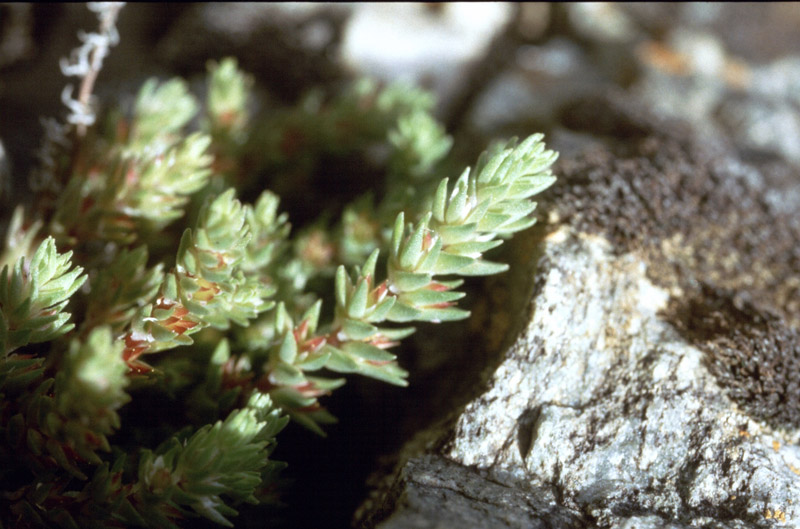Sedum tetramerum: Red Data Book of Armenia

VU* B 1 ab(iii) + 2 ab(iii)
Category. Vulnerable species. The extent of occurrence is less than 5000 km2, the area of occupancy is less than 500 km2. Since the greater part of the population is situated beyond the borders of Armenia the category of threat has been downgraded to VU. It was not included in the first edition of the Red Data Book of Armenia. It is not included in the Annexes of CITES and that of the Bern Convention.
Description. Stems usually solitary, thin, 2–5 cm. Leaves semicylindrical, almost ovate, glabrous or slightly ciliate. Flowers almost sessile, in spike–shaped inflorescence. Sepals obtusate, 4–6 mm long, with appendage at base. Tepals ovate–lanceolate, up to 3,5 mm long, acute, white. Ripe fruits domed, with rostellum, glandular–torulose.
Distribution. In Armenia the species grows in Yerevan (Ashtarak, Ararat) and Meghri (along Meghri riversides) floristic regions. EOO is 1020 km2, AOO is 20 km2. The number of locations is 3. Besides Armenia the species is distributed in the East Caucasus, East and South Transcaucasia and Middle Asia.
Ecological, biological and phytocoenological peculiarities. Grows in lower mountain belt, at the altitudes of 700–1100 meters above sea level, on stony places of the semi–deserts. Flowering in June, fruiting from July to August.
Limiting factors. Restricted extent of occurrence and area of occupancy, loss/degradation of habitats caused by expansion of arable land.
Conservation actions. No conservation actions. Necessary: monitoring of the population state, establishment of specially protected natural area in Meghri region, in the neighborhoods of Agarak settlement.
Suggestions
 The Ministry of Environment sent a letter international partners to draw their attention to the real danger of environmental disasters as a result of Azerbaijan's large-scale aggression towards the territory of Armenia
The Ministry of Environment sent a letter international partners to draw their attention to the real danger of environmental disasters as a result of Azerbaijan's large-scale aggression towards the territory of Armenia
 Vicia pisiformis: Red Data Book of Armenia
Vicia pisiformis: Red Data Book of Armenia
 Vavilovia formosa: Red Data Book of Armenia
Vavilovia formosa: Red Data Book of Armenia
 Trigonella capitata: Red Data Book of Armenia
Trigonella capitata: Red Data Book of Armenia
 Trigonella astroides: Red Data Book of Armenia
Trigonella astroides: Red Data Book of Armenia












